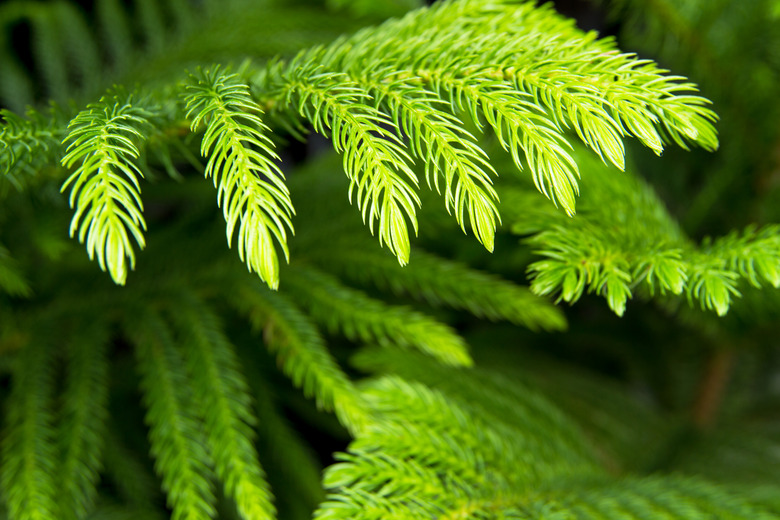How To Care For Indoor Pine Trees
We may receive a commission on purchases made from links.
An indoor pine tree can be a beautiful addition to your houseplant collection. A common type of indoor pine tree is the Norfolk Island pine (Araucaria heterophylla, USDA plant hardiness zones 9 through 11), which isn't a "true" pine tree in the Pinus genus at all. While they're most commonly thought of in the winter months when they're often sold during the holiday season, indoor pine trees can thrive inside your home year-round under the right conditions. Knowing how to care for indoor pine trees can help you keep yours looking as attractive and healthy as possible.
Indoor Pine Location
Indoor Pine Location
The first factor to consider when caring for an indoor pine tree is where you place it in your home. Norfolk Island pines need a good amount of sunlight every day, so they should be placed near a window. Light will help your tree to keep its bright-green color. Placing your indoor pine on the window ledge in a well-lit room is the best way to achieve optimal growth too. Be careful to place it so that the foliage doesn't touch the window pane; excessive heat from too much direct sun can burn the needlelike foliage.
Norfolk Island pines tend to like staying in one place, so it's best to find a permanently well-lit spot for your plant as opposed to moving it into the sunlight for a period of time each day. It's also important to rotate your tree a quarter turn every few days to ensure all sides of the plant get enough light. This will ensure your tree grows upright and symmetrical rather than bending toward your window.
Indoor Pine Watering
Indoor Pine Watering
Norfolk Island pine trees like to be kept in soil that's moist but never soggy. When the top inch of soil feels dry, it's time to water your plant. These trees should be watered thoroughly so the entire soil area gets wet. Consistency is key, so make sure you never let too much time pass between waterings.
However, it's essential that you don't allow your pine to sit in water. The roots in particular are susceptible to damage and rot if kept in a stagnant, wet condition. This means the right sort of pot is important. Select a plant pot with drainage holes and then set it inside a saucer. After watering, the saucer will fill up with any excess water, which can be dumped out.
Other Indoor Pine Tips
Other Indoor Pine Tips
The right soil can really help your tree thrive. Opt for half potting soil and half peat moss for optimum conditions. You may also wish to add some water-soluble fertilizer to the soil around your tree every two weeks, or according to product-specific label directions, throughout its growth period of March to September. You don't need to fertilize your pine tree during its resting phase in winter months.
The correct temperature is also important to help your tree thrive. Cold drafts and temperatures below 40 degrees Fahrenheit can be very harmful. A temperature around 50 F at night and up to 70 F during the day is optimal. Try to place your tree away from any vents or open spaces that could cause large fluctuations.
Humidity is another important factor to take into consideration. Indoor Norfolk Island pines like moist conditions. This can be achieved by running a humidifier or misting your plant once a week.
These trees rarely need pruning, but if you do notice any dead branches, they can be snipped away using hand shears. If you're noticing a lot of brown needles or branches, it's likely that your tree needs a higher temperature and more humidity.
